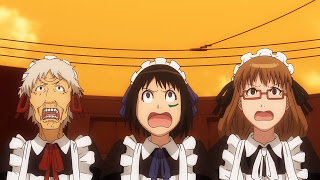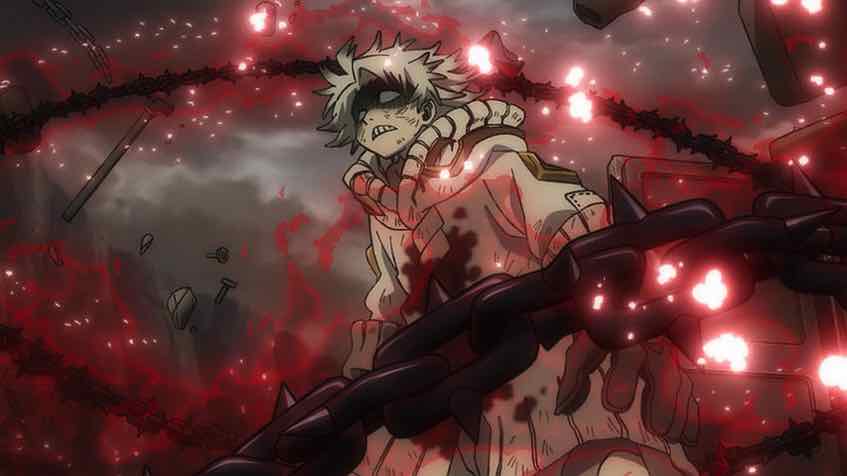I’ve said this before, but Soredemo is a series that elevated itself in my esteem as much as any I’ve watched for a while. It was on the edge for me whether I’d blog it after the first couple of episodes, but somewhere roundabout the third episode my resistance wore down and I started to really get into the odd world being created here.
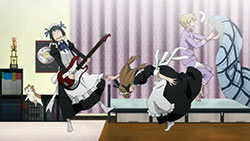 This manga was a perfect vehicle for the better angels of SHAFT’s nature to reveal themselves. Every SHAFT series is instantly, recognizably SHAFT. Sometimes that can be a bad thing, but here it’s good – the visual style works perfectly with the off-kilter, quick cutting style of the source material. In a sense we’re seeing this world through Arashiyama Hotori’s mind – her clever but dim-witted, innocent, mischievous, ADHD teenaged brain. Hotori is not so much a girl as an element – pure chaos unleashed with “blowfish cheeks” on a suspecting but still unprepared neighborhood in Tokyo.
This manga was a perfect vehicle for the better angels of SHAFT’s nature to reveal themselves. Every SHAFT series is instantly, recognizably SHAFT. Sometimes that can be a bad thing, but here it’s good – the visual style works perfectly with the off-kilter, quick cutting style of the source material. In a sense we’re seeing this world through Arashiyama Hotori’s mind – her clever but dim-witted, innocent, mischievous, ADHD teenaged brain. Hotori is not so much a girl as an element – pure chaos unleashed with “blowfish cheeks” on a suspecting but still unprepared neighborhood in Tokyo.
While the supporting cast played a larger role as the series progressed, Hotori was always at the center of things and Omigawa Chiaki’s performance is central to the success of the adaptation. This was a role she was born to play, and it’s no wonder Shinbo likes her so much – her histrionic, always on the verge of panic yet lovable voice is a great fit for his restless eye. I enjoyed her in Soul Eater and especially as Jun in Natsu no Arashi (another Shinbo series) but this is a star vehicle for Chiaki, and she really runs with it. If you don’t buy her in the lead role, this definitely isn’t going to work for you.
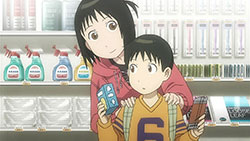
The genius of Masakazu Ishiguro’s manga is that it’s a true slice-of-life, unconcerned with structure or dramatic convention. It’s a series of short and generally hilarious chapters that don’t especially need to be read in order – each stands more or less independently once you know the premise and characters. Ishiguro’s writing (and Shinbo’s direction) really give the sense that things are happening in real-time – you just happened to look in and see what was happening at any given moment. Thus, the decision by SHAFT to adapt the chapters literally as mini-episodes (as Mitsudomoe and Shinryaku Ika Musume did) was crucial – as was the decision to adapt them in more or less random order. Some of the funniest and best manga chapters – such as Takeru’s adorable date with Ika, his “Rock Lobster” – were not ones I would have necessarily expected to see adapted. You would think the anime would narrow the focus to the cafe and the three or four most important characters, but it didn’t. Shinbo let Takeru, and Grandpa’s ghost, and the antiques dealer have their moments – even if they were as serious as they were humorous.
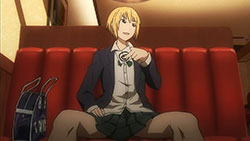
The cast of this show is large, no question, and again Shinbo chose wisely in letting Hotori take a smaller role after the first few eps. Tatsuno and Kon were vital elements to the story, but we also got great mileage out of Takeru, Moriaka the math teacher, Hotori’s Dad, the middle-aged merchants at Seaside, and even Grandma’s deceased husband. This all served to feed the slice-of-life authenticity, as did the layering in of gently serious moments with the absurd and satirical comedy. Not just the final episode, but the time-travel and ghost episodes were really well-done and genuinely thought-provoking.
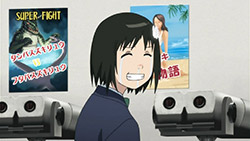 Finally, as for the production values, what’s most striking is the sound. The OP and especially ED were excellent pieces of work, as was the insert song the maids played at the school festival. But the overall sound design was just as impressive – a deft use of silent pauses and loud exclamations and the highlighting of Hotori’s voice as a sort of “first violin” in this orchestra of everyday life. The series looks interesting as all Shinbo series do, even if the animation isn’t conspicuously lavish. The character designs are spot-on and very faithful to the manga, not too pretty or grotesque but whimsically ordinary.
Finally, as for the production values, what’s most striking is the sound. The OP and especially ED were excellent pieces of work, as was the insert song the maids played at the school festival. But the overall sound design was just as impressive – a deft use of silent pauses and loud exclamations and the highlighting of Hotori’s voice as a sort of “first violin” in this orchestra of everyday life. The series looks interesting as all Shinbo series do, even if the animation isn’t conspicuously lavish. The character designs are spot-on and very faithful to the manga, not too pretty or grotesque but whimsically ordinary.
There’s been talk of a second season – Omigawai Chiaki prayed for it on a TV special where she visited the shrine the one in the series is based on – and SHAFT is a studio that isn’t afraid of sequels. I don’t imagine this is going to be a huge hit in terms of DVD sales but neither was Natsu no Arashi, and that got a second season. We have some fantastic manga chapters still out there so it’s really up to Shinbo at this point. I’d absolutely love to see more and I’ll be rooting for it to happen – I may even give 3400 yen at a shrine and pray for it…


